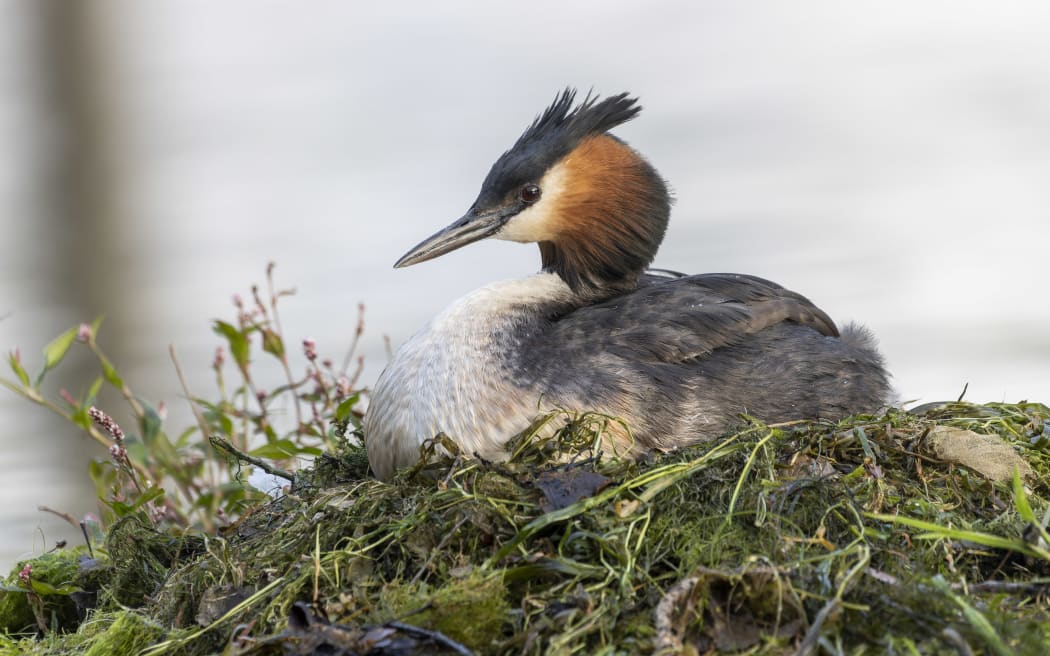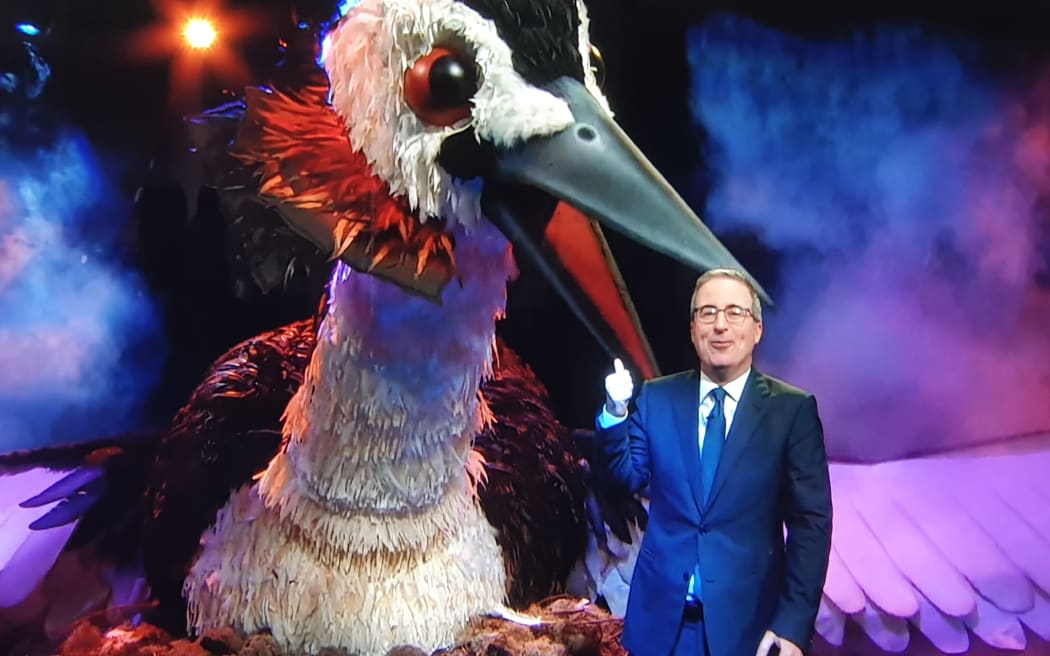
The competition went global this year, getting some exposure from US talkshow host John Oliver.
Oliver's campaign featured ads in Paris, Mumbai, Tokyo and London, and flying a banner over Ipanema beach in Brazil. As if coverage on his own show Last Week Tonight wasn't enough, he even made an appearance on The Tonight Show with Jimmy Fallon in full-on grebe garb.
His campaign led to the system crashing.
Oliver's pick? The winning bird, the pūteketeke.
"Pūteketeke began as an outside contender for Bird of the Century but was catapulted to the top spot thanks to its unique looks, adorable parenting style, and propensity for puking," Forest and Bird chief executive Nicola Toki said.
"We're not surprised these charming characteristics caught the eye of an influential bird enthusiast with a massive following."

Forty-five of this year's verifed votes were under the name John Oliver, one of them for the fairy tern and the rest unsurprisingly for the pūteketeke.
Thousands of fraudulent votes were discounted. One person even voted 40,000 times for the tawaki piki toka eastern rockhopper penguin.
With its burnt orange mullet, striking plumage and propensity for puking, the pūteketeke is clasified as 'nationally vulnerable'. There are thought to be fewer than 1000 of them in Aotearoa, up from just 200 in the 1980s.
Their recovery is in part thanks to efforts such as the Lake Wānaka Grebe Project, after Forest and Bird member John Darby built a floating nesting platform 10 years ago.
More than 80 percent of native birds are on the threatened species list.
"Pending cuts to the Department of Conservation, the agency tasked with protecting these taonga under threat, are a huge worry. The world is watching us and how we look after our birds," Toki said.













